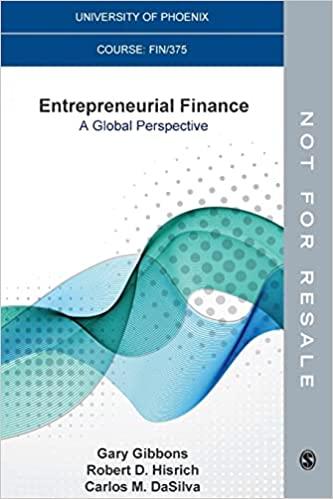Question
Dragon Equipment has sales in the most recent year of $5,500M, and operating expenses at 80% of sales. The firm also had capital expenditures of
Dragon Equipment has sales in the most recent year of $5,500M, and operating expenses at 80% of sales. The firm also had capital expenditures of $250M and depreciation expense of $100M. Working capital needs are 8% of sales. The firm expects sales, capex, and depreciation to grow by 10% in Years 1 and 2, 8% in year 3, 7% in year 4 and 5% in year 5. After year 5, growth will reach a steady state at 3%, and the return on new invested capital will be 20% for the foreseeable future. As the firm becomes more efficient, operating expenses are expected to go down by 2% per year for the next three years, then stabilize at that level. The firm is currently financed with $3,000M in debt and $4,000M in equity. Last year, Drexel had $6,000 in total capital.The bondholders require a 5.0% return, and the stockholders require an 10% return. The relevant tax rate is 22%. The firm has $10M in leases, $175M in excess cash and 350M shares outstanding.
Estimate the Enterprise and Equity Value using DCF analysis, filling in all required calculations. Assume capital structure remains constant throughout. Use both the FCF and key value driver formulas for the calculation of terminal value. If the stock is currently trading in the market at $71 per share, do you think it is undervalue, overvalued or fairly valued based on your DCF model of intrinsic value. Given your estimates, will Dragon Equipment increase its value over time?

Step by Step Solution
There are 3 Steps involved in it
Step: 1

Get Instant Access to Expert-Tailored Solutions
See step-by-step solutions with expert insights and AI powered tools for academic success
Step: 2

Step: 3

Ace Your Homework with AI
Get the answers you need in no time with our AI-driven, step-by-step assistance
Get Started


